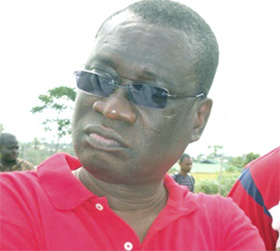560
 Kumasi exists in the forest region of West Africa, but there is evidence that the area around it has been kept cleared since the Neolithic. The city rose to prominence in 1695 when it became capital of the Ashanti Confederacy due to the activities of its ruler Osei Tutu.
Kumasi exists in the forest region of West Africa, but there is evidence that the area around it has been kept cleared since the Neolithic. The city rose to prominence in 1695 when it became capital of the Ashanti Confederacy due to the activities of its ruler Osei Tutu.
He said the Atlanta festival was a successful event showcasing the creative talents and global contributions of people of African descent.
Mr Sarpong said highlights of KIBAC would include a grand durbar of the chiefs and people of Asanteman, street carnivals, colloquium to be hosted by the Kwame Nkrumah University of Science and Technology, Women’s Day, Fashion and Awards Night, as well as Theatre Performance.
There would also be traditional music and dance, Children’s Day and performers from the London Carnival Arts, with many invitees from all walks of life would be expected to grace the occasion.
Brief History of Kumasi
Kumasi is the capital city of the Ashanti region of Ghana located in the south-central part of the country, about 250 km (by road) northwest of Accra. The city is popularly known as “The Garden City” because of its various species of flowers and plants.
In the south-central part of the country, Kumasi is approximately 300 miles north of the Equator, 100 miles north of the Atlantic’s Gulf of Guinea, and 100 miles west of the Prime Meridian. With a population of 1,517,000 (2005), it is the second-largest city in Ghana.
 Kumasi exists in the forest region of West Africa, but there is evidence that the area around it has been kept cleared since the Neolithic. The city rose to prominence in 1695 when it became capital of the Ashanti Confederacy due to the activities of its ruler Osei Tutu.
Kumasi exists in the forest region of West Africa, but there is evidence that the area around it has been kept cleared since the Neolithic. The city rose to prominence in 1695 when it became capital of the Ashanti Confederacy due to the activities of its ruler Osei Tutu.Kumasi was founded in the early 19th century by King Osei Tutu. The king named the city after the KUM tree, which he planted as a symbol of victory for the Ashanti Empire over the British.
Kumasi is endowed with large deposit of gold and is among the wealthiest cities in Ghana. Currently, major exports are timber, cocoa and have 50 percent of the timber industry in the country, with more the 4,000 employed in the business.
Source: GNA
More update on the Festival can be found on http://www.kibacgh.com/index.php



